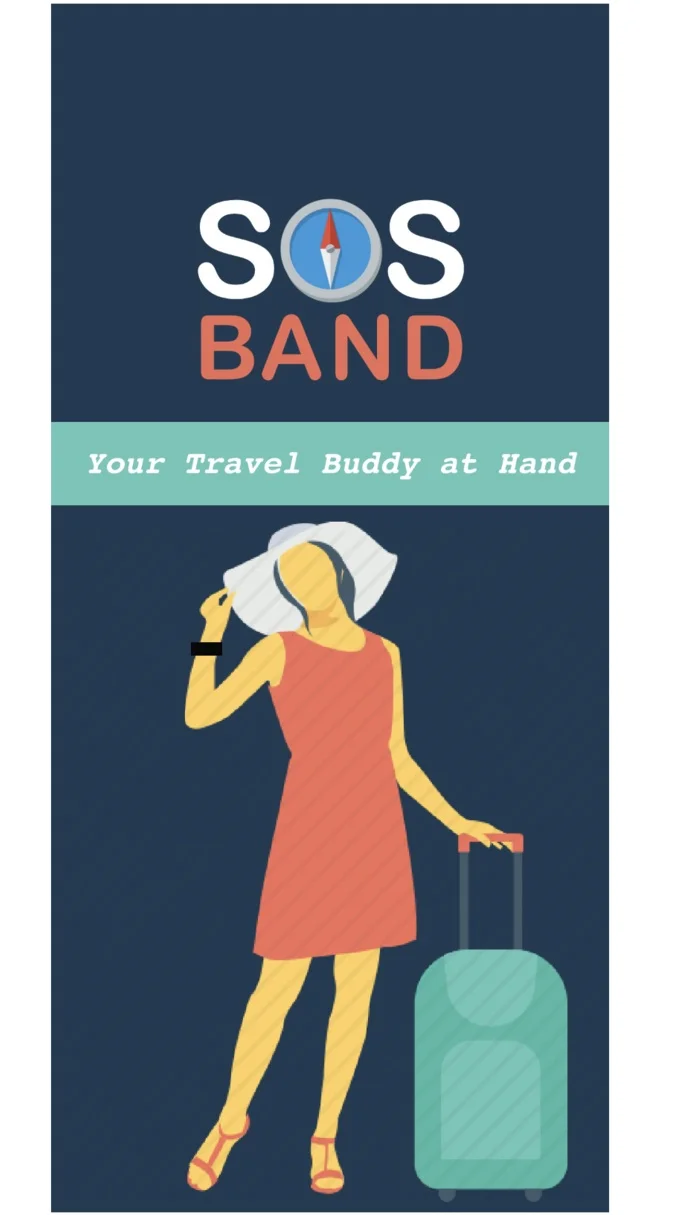SOS BAND - PROTOTYPING
DESIGN THINKING, PERSONAS, USER INTERVIEWS, WIREFRAMING AND PAPER, DIGITAL, & 3D PROTOTYPING
The Challenge
Create a vision/prototype for a new product that serves as a solution to a problem that a user would encounter while traveling or commuting.
Play this video to view the Protocast
Design Process
Our 3-member team used the goal-directed design process.
Summary
Product Synopsis
Our team wanted to create a product that travelers could use in case of an emergency.
Based on informal interviews and discussions, we concluded that international travelers need special kind of assistance when in crisis.
Persona Synopsis
Anna enjoys connecting with other people and experiencing new environments. When she travels, she wants to feel safe and even empowered. She feels vulnerable, however, because she knows travel still has risks.
User Problem Synopsis
Travelers in crisis may not receive urgent or adequate assistance because of language barriers, cultural barriers, or substandard infrastructure.
SOS-Band
The SOS-Band is a slim, waterproof wristband that enables users to alert the SOS Call Center via a simple, single sliding button.
With the alert activated, the SOS-Band automatically sends the user’s location coordinates and activates a built-in microphone that captures and sends ambient sounds and messages.
The Process & Logic
Given the ubiquity of wrist-worn devices, the team rapidly came to consensus on the utility of a wrist-worn physical form factor.
During early development, we rejected several design ideas which seemed more appropriate for edge cases.
Interview data confirmed our original notion to create something with a slim, light, and even stylish form factor.
The device is similar enough to other devices (e.g., FitBit) so as to not draw undue attention to the wearer.
The simple and limited functionality of the wristband device focuses on filling the persona’s goals while simultaneously enabling the device to maximize battery use, durability, affordability, and ease of use—particularly by those in distress or otherwise impaired.
The SOS-Band clearly communicates its status in accordance with design principles that underscore the importance of enabling a user to receive immediate feedback about the status of a product.
SOS-Mobile App
Through SOS-Mobile, travelers can manage their personal contacts, social network profiles, updates, relevant files such as photographs or documents, and tasks to resolve a crisis.
The Process & Logic
The team briefly considered a website, but designed a mobile app because people mostly use cellphones to manage their lives.
Testing the paper prototype revealed a number of opportunities to make the app simpler and easier to use.
Each screen associates with a single, clear CTA (Call-To-Action). Unclear CTA could complicate users during crisis.
Many of the pages, (e.g., sign-in) look similar to other smartphones apps so as to match the mental model of our users.
Maps have become an integral part of many apps. Including a map on the homepage with current location information assures travelers that the app knows their location.





